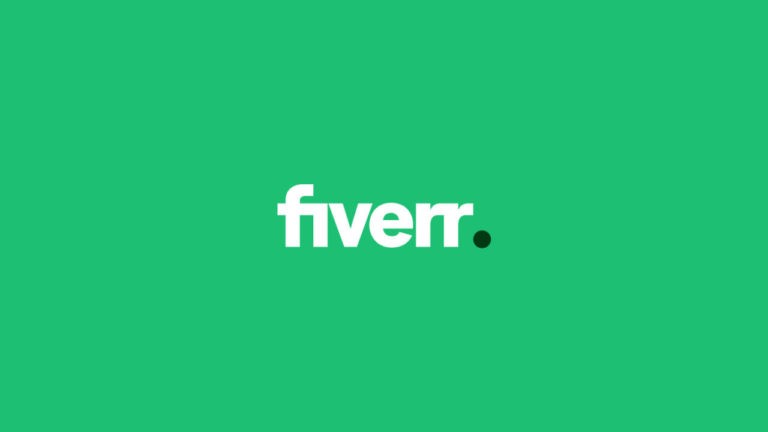For several years now, I’ve been interested in reading and following a variety of personal finance blogs. They have helped to educate me and provide ideas on how to build wealth.
And, we have been pretty successful in building our wealth. We have used a combination of living frugally, attacking our debt, and trying to maximize our income.
Along that journey, I realized that I love thinking about, writing about, and living all things personal finance. In order to help spread my knowledge, I decided to start the Couple Wealth blog.
Why Start a Personal Finance Blog
Blogging is a great way to connect with other people and share experiences. While I am not a finance professional, I believe I have some practical experience that can help and motivate others.
My ultimate goal for starting a personal finance blog is to help others. If I can encourage even one other person to improve their financial situation, it will be worth it.
It has not been easy to grow our net worth to over $500,000, but I also know it is even harder for other people to save even $500. I’m hoping that the information I share on Couple Wealth can help more people get started towards financial independence.
Of course, another incentive of starting a blog is the potential to earn money from it. While it will likely take quite a while to earn any money from this site, top bloggers can earn six figures up to a million dollars per year.
Follow My Progress Building a New Blog
Besides sharing my personal finance experience, I will also provide an inside look to growing the Couple Wealth blog. I’ll share what goes into building and running a blog, plus my strategy to scale over time.
Since I have never started a blog before, I have two goals for Couple Wealth.
- Create informative and engaging content that helps other people build wealth.
- Try to earn $1,000 per month through affiliate marketing, ads, and sponsorships on the blog.
I’m not sure that I’ll be very successful at either one, but I’m willing to try.
To accomplish my goals, I am focusing on improving my writing and finding topics that are useful for people.
At the same time, I am also working to create a system that will monetize the blog and drive traffic.
Here is an inside look at starting a new personal finance blog from scratch.
Picking a Domain Name
Once I knew I was serious about starting a personal finance blog, I needed to decide how to publish it. I could either use an external blogging platform, like Medium, or host it myself.
I chose to host my own website as my primary blogging platform. This gives me more control over my traffic, SEO, articles, and how I monetize the blog.
To build my site, I needed to purchase a domain name. I decided that I wanted to focus on personal finance for couples, so used that as my starting point.
I went over to GoDaddy to see what domain names were available. After putting in a few different variations of keywords, I found CoupleWealth.com and it was available.
When I build a website, I always prefer .COM domains because they look more professional. For only $12 for the first year, I was able to register my preferred domain very quickly.
Setting Up Hosting
The domain is the URL that is typed in the browser search bar, but they need to be pointed to hosting to view an actual website. I have use Hostgator for over a decade to build websites as my preferred hosting provider.
Since I already had a hosting account, I just had to add my domain from my cPanel. Hostgator is cheap and easy to get started with building websites, plus has the option to scale if you need more features.
Once I added CoupleWealth.com to my hosting account, I installed WordPress. WordPress is an extensible platform that makes it very easy to create websites and blogs with a variety of features.
Using WordPress Themes and Plugins
WordPress is the backbone that lets themes and plugins be used to create a website.
WordPress themes are used give an overall feel and style to the website. They control font, colors, and layouts. Depending on what you would like your website to look like, you can choose from a variety of free and paid WP themes.
I decided to use the Kadence WP Theme for Couple Wealth since it seemed to have plenty of features.
WordPress plugins are pieces of software that can be installed on your WP site to add functionality. These are usually focused on specific features, such as social media sharing or security.
The top plugin I use is Elementor, which provides a drag-and-drop site builder. This makes it very easy to design and publish new pages without needing to mess with HTML coding.
Writing My First Few Articles
Once I got the framework of the blog set up, it was time to start creating some content.
The first article I wrote was the About page on this blog. The purpose was to give some background on me, my wife, and our financial journey. I know it wasn’t perfect, but it started to get my ideas flowing.
At this point, I was excited to start sharing more about my experience.
I quickly moved to writing my second post, which was how we paid off our student loans. This is a topic that many people are interested in, so I was hoping it would be useful for readers. I tried to go through how we racked up our student loan debt and our strategy for paying it off.
After that, I continued to write more articles about my personal experience, including buying cars and getting married.
Blog Content Strategy
In the first two months of launching the blog, I have published 40 articles. I try to post as frequently as I can, which is often around once per day. However, I do not worry if I take a couple days off to do other things.
Building a successful blog takes time and does not happen over time. I am trying to embrace this by pacing myself with content and getting in a habit to write regularly.
My first goal for the blog was simply to get my story written down and published. Once I had a few of those posts, I started to focus on information for couples and newlyweds. I also started to write a few articles about the basics of making, saving, and investing money.
After I build a core set of articles based on these topics, I am planning to branch out into more specific and niche topics. This will help to improve search engine rankings and gain more targeted traffic.
My content strategy currently is structured as:
- Personal experience articles
- Basic personal finance education articles
- Financial planning tips tailored for couples and newlyweds
- Specific, long-tail keyword articles for SEO
Social Media Strategy
Social media is an important way to build a following and increase traffic to a blog. However, it can also be very time consuming for minimal benefit.
Knowing this, I decided to focus on two social media platforms to start: Facebook and Twitter. Once I have a better start, I can always branch out into other platforms, like Pinterest, YouTube, or Instagram.
I set up a Facebook page and added some basic information and pictures. I did the same thing with Twitter so that they would have a similar feel.
Every time I publish a new blog post, I also post a link to my Facebook and Twitter pages. I include appropriate hashtags and try to engage with other users to build my following.
For Twitter, it is possible to gain followers by tweeting regularly and engaging other people. I am trying to tweet more often, include hashtags, and interact with other people who are interested in personal finance.
Paid Facebook Ads
Facebook has been a little harder for me to get page likes organically since I haven’t been active in other groups. However, I was offered a buy $20, get $20 Facebook ad coupon and I decided to try it out.
I created two ad campaigns: one to increase page likes and one to send traffic to an article. I spent a total of $40 on these ads ($20 out of pocket) and got 25 page like and over 200 link clicks to my article.
The page likes were useful to be able to get the minimum level needed to create my vanity URL at facebook.com/couplewealth.
The link clicks didn’t make any money directly, but was a good test to prove that I could get clicks for around $0.06 each. Once I set up a better sales funnel in the future, I plan to revisit more paid Facebook traffic.
Link Building and Outreach
Besides writing new articles and using social media, I am slowly trying to build a presence on related websites. This will help to drive more traffic, improve SEO with backlinks, and build relationships with other bloggers.
My first plan was to republish my articles on Medium. I created a Medium profile and started to follow other people in the personal finance niche. I then started to import articles that I had published on my blog about a month earlier.
Medium allows content to be republished from other sites. It provides the right canonical links to make sure you are not penalized for duplicate content in search engines. This should help grow my audience and get my content in front of people who otherwise wouldn’t have even known about Couple Wealth.
In addition to Medium, I’m also working to build relationships and partnerships with other bloggers. Over time, I’m hoping to be able to write guest posts to increase my exposure.
Are you a blogger interested in me writing a guest post for you? Send me a message!
Monetizing a Blog
Since one of my goals is to make $1,000 per month off my blog, I need to find a way to monetize it. To date, I have not made any money, but I also still have low traffic levels.
I know that building traffic and profits takes time when blogging. With limitations of working a full-time job, I am trying to be realistic that it could take a year or two of consistent work to become profitable.
That said, I am working to put systems in place that will help to monetize my blog. I started with adding an email opt-in form to build a list of subscribers. This included building out a membership area that will hopefully encourage people to sign up.
I have also joined a variety of affiliate programs to earn a commission by promoting products. I have decided to only include affiliate links on this site to products that I personally use, have researched, and feel comfortable recommending to other people.
Finally, my long-term monetization strategy is to create some sort of eBook, course, or software that I can sell through my blog. I’m not too worried about that yet since I am still building my base. However, I will start to work on that in a few months.
Current Blog Stats
To help hold myself accountable and track my growth over time, here is where my blog currently stands on 1/22/2021. Yes, it is pretty sad looking right now!
- Blog Launched: 11/24/2020 (2 months old)
- Published posts: 40
- Facebook followers: 25
- Twitter followers: 22
- Medium followers: 57
- Website visitors last 7 days: 41
- Backlinks: 0
- Website Authority: 1
- Profit: $0
Thanks for following my progress! Leave a comment if you have a tip on how to grow a blog faster.













